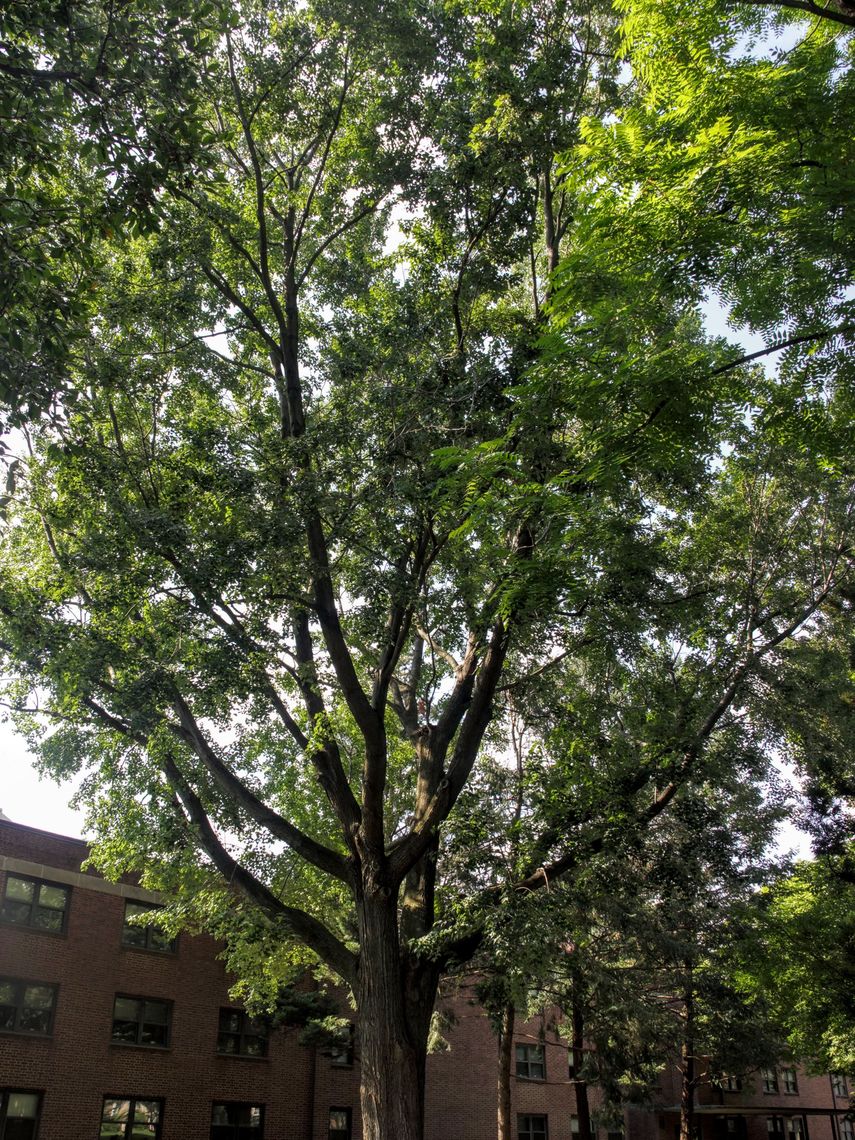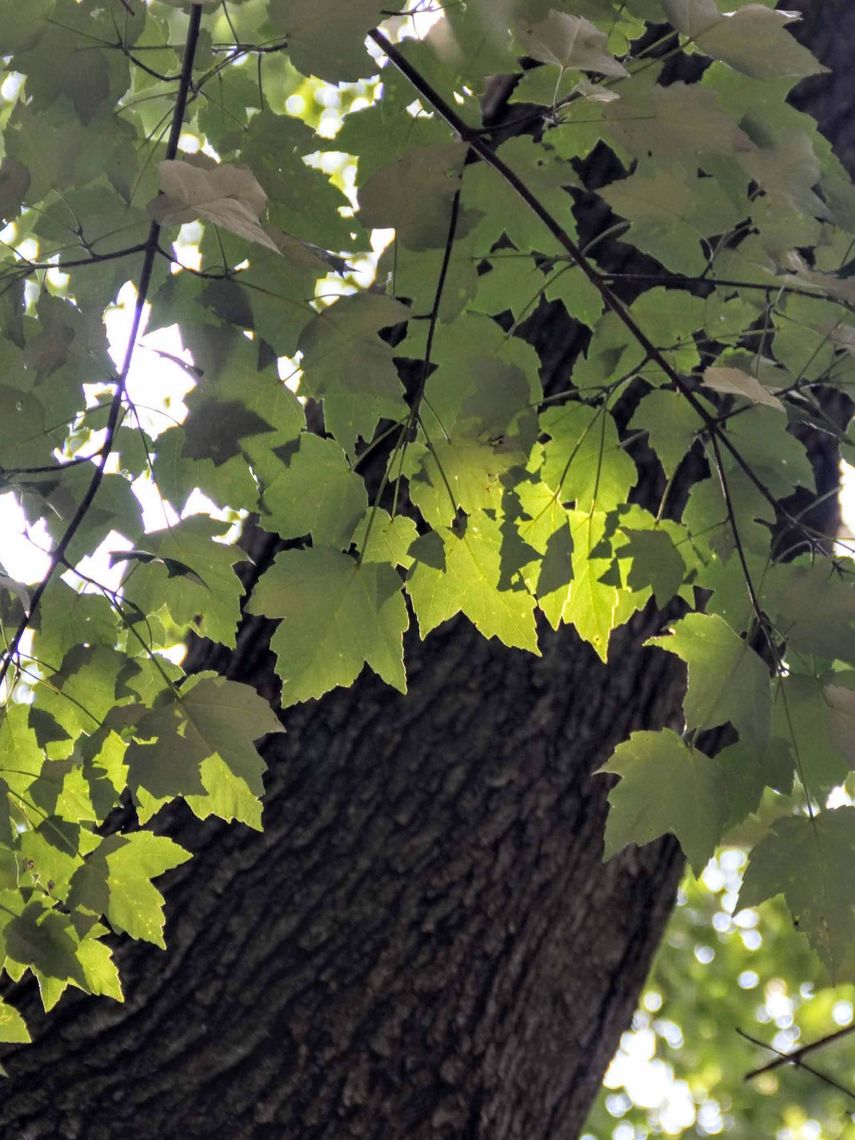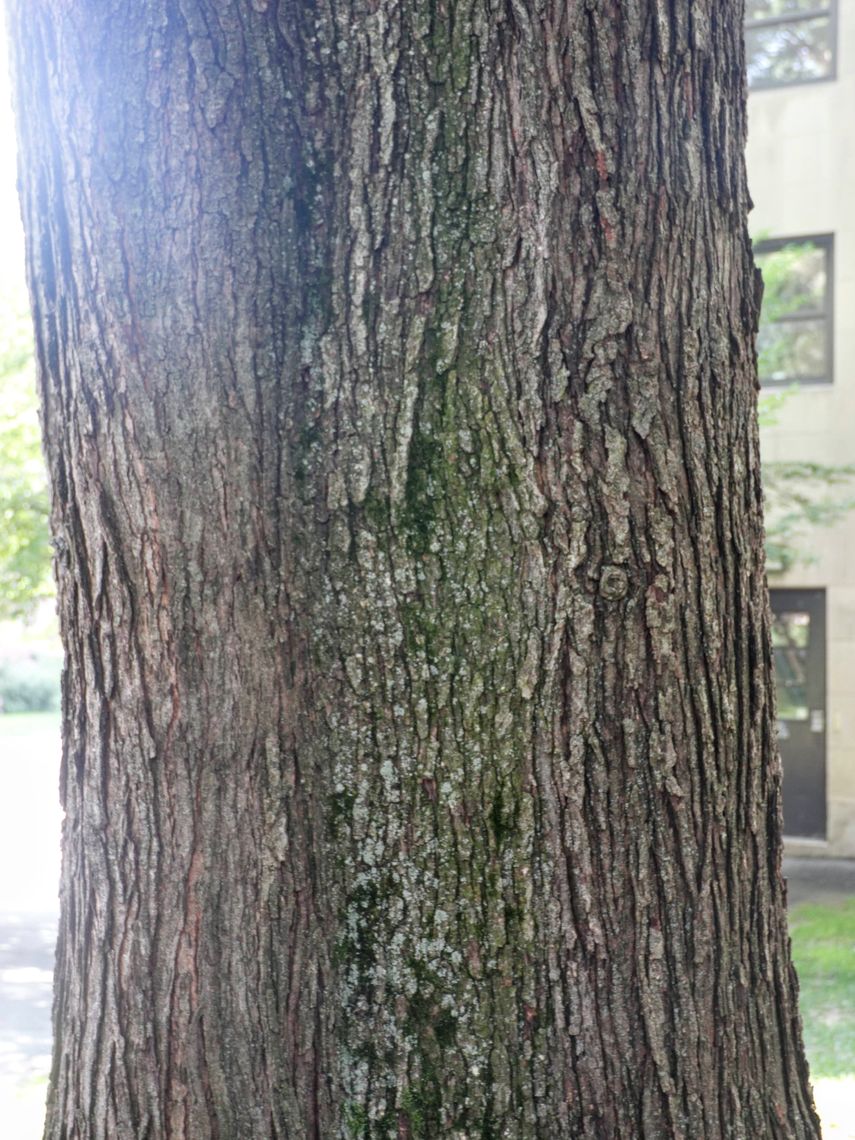Red Maple (Acer rubrum)
The red maple is commonly found in the woods of Eastern North America and is easily recognizable in the fall due to its bright red and yellow leaves. This tree also has red flowers, fruit, and seeds. This tree can be found in a variety of habitats, including swamps, mixed forest ecosystems, and rocky uplands. The tree also does well in lawns, parks, and along streets. The red maple attracts game and small mammals, insect pollinators, and songbirds.
Family: Aceraceae (Maple)
Characteristics: The 2-5-inch-long leaves are dark green, have 3-5 irregularly toothed lobes, and have red petioles. In the fall, leaves turn a bright red or sometimes yellow. In the spring, red flowers begin to bloom. Young trees have smooth gray bark. As the tree matures, bark becomes dark gray and develops scaly plates. The red maple produces red samaras (paired winged seeds). This tree has a pyramidal or elliptical shape when young and matures to be oval, rounded, or irregular. It grows 40-70 feet high and 30-50 feet wide.
Foliage: Deciduous (leaves lost seasonally)
Geographic Origin: Eastern and Central North America (native)
Cultivation Notes: Requires low maintenance. Does best in full sun to part-shade. Prefers moist and slightly acidic soils, though is tolerant to a wide range of soil types. This tree has a dense and spreading root system, and so needs plenty of room to grow. It is very cold hardy.
Number on Campus: 57 (of many varieties, hybrids, etc.)
Sources: Dirr, Morton Arboretum, Missouri Botanical Garden



